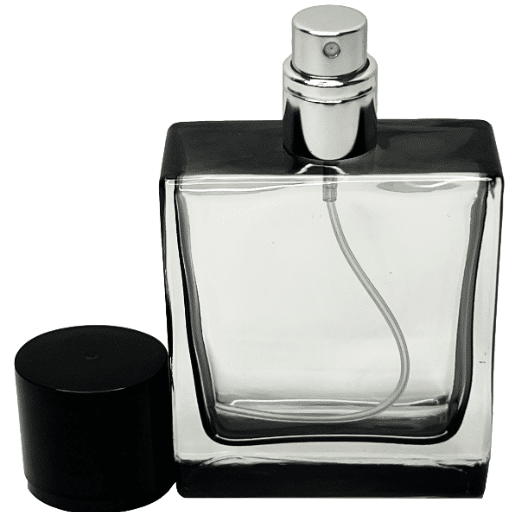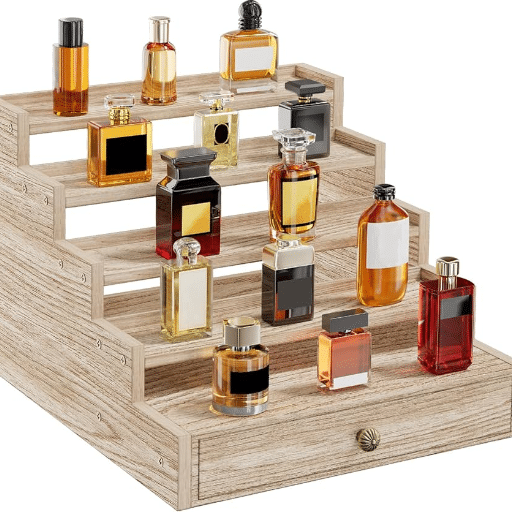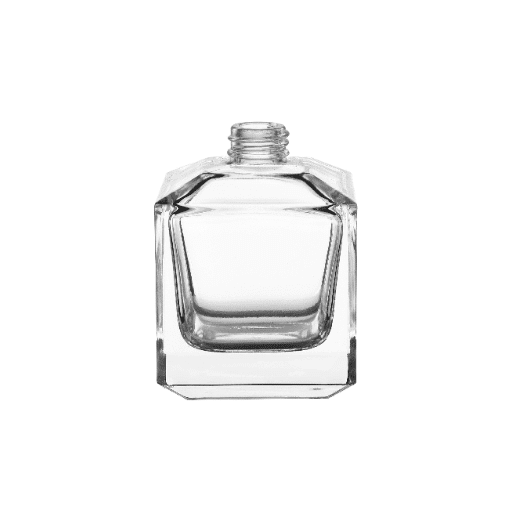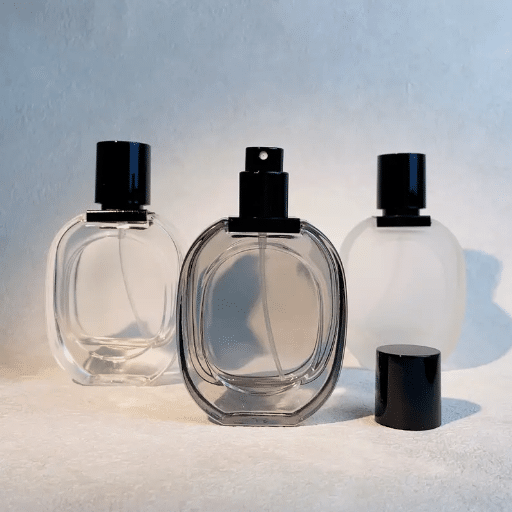Glass design is far from a mere aesthetic affair; it is the amalgamation of creativity, craftsmanship, and functionality. Ideally, the classy bottle design expresses the very spirit of the fragrance inside; it should convey a story, stir emotions, and leave behind a lasting sensory memory. The article delves into the world of perfume bottle design, its history, design ingenuity, and glass-blowing craftsmanship that transform an ordinary piece of glass into an iconic masterpiece. This blog aims to reveal the inner workings of the art and craft behind fragrance packaging, highlighting its impact on branding and consumer perception. Whether the reader is a fragrance enthusiast, a design connoisseur, or simply curious about the magic behind these creations, this blog seeks to uncover the secrets behind the process.
The Evolution of Perfume Bottle Design
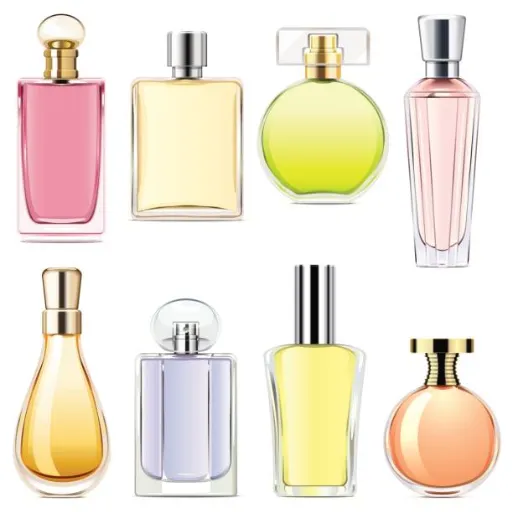
Over the centuries, the creation of perfume bottles has undergone enormous evolution, marking each era with cultural trends, technological advancements, and shifting consumer preferences. Going back to the times of the ancient Egyptians and Mesopotamians, early perfume containers were made of clay and glass, with designs intended to serve their practical purpose. By the Renaissance Period, bottles for perfumes began to be more elaborate and were often made of highly precious materials, such as gold and crystal, thus becoming highly luxurious objects that displayed wealth and social status.
With the emergence of industrial manufacturing in the 19th and 20th centuries, designers began to experiment and bring innovation even to the most complex designs. The way perfume bottle designers put Guerlain and Chanel at the forefront was an axiom of beauty, whereby they made bottle design in fine arts that stand the test of time. Today, designs are very modern, with a focus on sustainability, customization, and new innovative materials in response to customers’ growing demand for environmentally conscious and unique packaging. The evolution of perfume bottles effectively demonstrates how form achieves harmony with function, remaining relevant to a culture and society while continuing to charm as objects of beauty.
Historical Milestones in Perfume Bottle Design
The development of perfume bottle design has been marked by the critical changes in art, technology, and society over its many centuries of existence. A notable milestone was reached back in the early 19th century with the expeditions in glassmaking, such as those of molded glass, permitting even more intricate and decorative forms. At the end of the 19th and the beginning of the 20th century, the Art Nouveau period introduced a style that combined naturalist motifs with exquisite craftsmanship, as seen in the works of Lalique, whose bottles became synonymous with elegance and refinement.
Another critical moment was the 1920s, when some of the most iconic bottle designs were carried out by Guerlain and Chanel, favoring geometric form and aesthetic minimalism as apt representatives of the Art Deco movement. In the post-World War II period, consumerism further flourished, giving rise to a brand-oriented packaging consciousness, wherein perfume bottles became a significant constituent of the identity for luxury fashion houses. Now is the time when sustainable materials and refillable designs come into the picture to work with the environment while emphasizing art and design.
Iconic Designs Through the Decades
Evolution in perfume bottle design has mirrored cultural and artistic developments in each period. The Roaring Twenties brought forth the glory of simple modernism, as embodied in the Chanel No. 5 bottle, with its clear, open spaces, geometric forms, and assertive stopper. Then, in the 1950s, Christian Dior’s “Miss Dior” bottles presented the bow, elegance, and femininity after the war. In the ’90s, a significant voice of the ‘Classique’ launch was Jean Paul Gaultier’s bold design, in the shape of a corset, as an expression of brashness and individuality. Moving now into today, sustainability is a defining focus for many brands without compromising beauty. The use of recycled glass, biodegradable substances, and refill technologies is fast becoming an equal emblem of modern perfume design. The design caters to the environmentally conscious and embodies the creative spirit of the house, marking these bottles as timeless symbols.
Influence of Culture on Bottle Aesthetics
Throughout history, perfume bottle design has always been influenced by cultural trends and societal values. At the beginning of the 20th century, the late-Gilded Age bottles reflected the craze for luxury and the romanticization of the Belle Époque. Likewise, the counterculture movements with the blasts of pop art in the 1960s brought in an air of playfulness to the more experimental bottle design of bold colors and unconventional shapes. Today, a global environmental consciousness is having a profound impact on design. Therefore, many brands choose to use reusable materials at the very least or, at best, go for the simplest design. At times, this stylistic discourse will be steered by geographically particular preferences, e.g., those intricate designs inspired by the traditional arts of the East-Middle or the more straightforward packaging that touches upon Nordic culture. Perfume bottles, through such cultural reflections, articulate far more than a simple scent-they become containers for the zeitgeist of their time and region.
Current Trends in Perfume Bottle Design
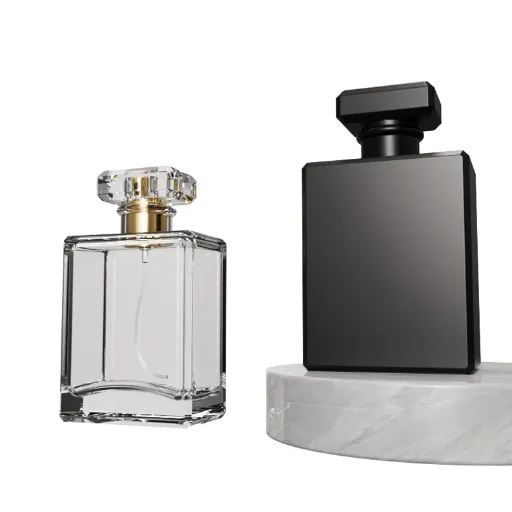
Sustainability, usefulness, and storytelling are the gist of modern perfumery bottle design. More brands follow eco-conscious brands with recyclable glass, recyclable aluminum, and less plastic. With purpose, minimalist designs that focus on simplicity and clear lines attracted more attention. Additionally, some bottles tell stories through symbolic shapes or a special touch or might incorporate a decorative motif. These current trends reflect some measures taken to balance environmental concerns with artistic expression.
Sustainability in Packaging Materials
Packaging materials for sustainable development have been a concern lately as industries strive to become more environmentally friendly. Biodegradable materials are increasingly being employed to reduce their environmental impact; such materials include those based on plant plastics or paper from responsibly managed forests. The recycled materials, mainly the post-consumer resins (PCR), help brands decrease the usage rate of virgin materials in packaging. The development of technology has also added a new layer to research on designing innovative solutions, such as compostable films and edible packaging, which aim for a total reduction in waste. Such initiatives are brought forth by environmental concerns, in tandem with the demand created by a global set of consumers for sustainable alternatives. Such trends represent a major step toward a circular economy, where materials are reused, repurposed, or biodegraded in a safe manner, helping to keep the planet healthy.
The Rise of Minimalism in Design
Design minimalism has gradually snowballed across various disciplines, including architecture, graphic design, technology, and fashion. It avows simplicity and functional aesthetics and strives to shed away anything that could overshadow the creators’ cause of clarity and intent. Recently, a renaissance of sorts has been observed in the digital world, where cleaner, simpler layouts and intuitive navigation have improved user experience and accessibility. Studies show that lightweight and simplified websites keep their visitors longer and draw even more engagement. This is a movement toward embracing quality over quantity, which aligns with the counterculture of intentional living and sustainability.
Innovative Materials and Techniques
As science merges with art, further challenging the boundaries of what is possible, cutting-edge materials and technologies are transforming various industries, including construction and fashion. Bio-based materials such as mycelium and algae are upping the ante, selling sustainability and versatility as the prospect of greener alternatives to conventional plastics and textiles. In a similar manner, 3D printing is being combined with new materials, such as recycled concrete and carbon-reinforced fibers, to create building processes that are faster, more efficient, and greener.
The Psychology of Perfume Bottle Design
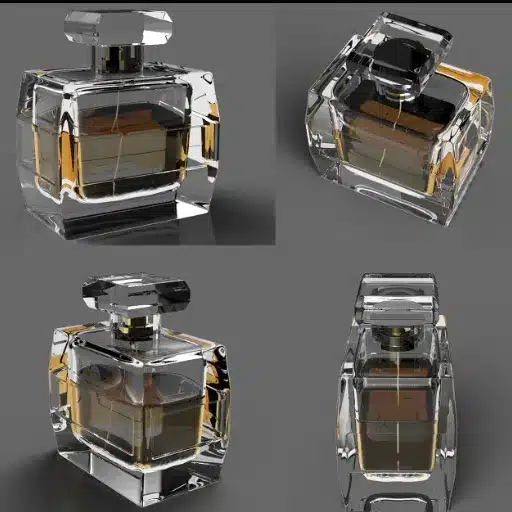
The design of scented-product packaging serves a special purpose in influencing how consumers perceive the product and their eventual decisions. Shapes and colors are some of the parameters that are carefully considered to invoke certain emotions that must be mascot for the specific liquid-type of scent. For instance, smooth and round bottles emanate the feeling of elegance and femininity, while strong and sharp angles give out feelings of power and modernity on their own. Gold or black signify luxury, whereas pastels symbolize freshness or sweetness. Essentially, the elements come together to form a bridge of emotional communication with the consumer that tells about the scent before it is even smelled.
How Shapes Influence Consumer Perception
By evoking subconscious associations and emotional responses, forms dominate the aggressive formation of a ‘brand perception.’ Shapes that are rounded, whether circular or spherical, suggest unity, harmonic comfort, and approachability, for which they are best suited toward a nurturing or calming kind of product experience. Clark and Werezi in 1984 proposed that angular shapes may stimulate such feelings of firmness, power, and rigidity by resonating along the lines of strength or innovation, and so do suits that clock finely into these definitions. Acting along those lines, according to research, such an impression causes a purchaser to be overtly influenced by their purchasing behavior, as they obviously lean towards designs that meet their expectations and requirements. To this, sleek and geometric packaging would appeal to an audience seeking sophistication, whereas much softer, organic forms would attract those who value warmth and familiarity. Indeed, it testifies to the eternal strategic place of shape in design, enabling brands to communicate their values and purpose subtly to the targeted market.
The Role of Color in Brand Identity
Color is a powerful element in shaping brand perception. It influences human moods and establishes specific associations; there is a psychological connection between the color and the target audience. For example, blue symbolizes trust and confidence, and is thus mostly applied among tech and financial companies. In contrast, red awakens feelings of enthusiasm and urgency, and is preferred mainly by brands that aim to arouse passion or call to action. It is said that 85% of our decisions are influenced by color, making it one of the crucial factors of brand identity. Thus, companies can create a loyal clientele and engage them meaningfully by using colors in accordance with their values and prospective audience.
Textures and Their Emotional Impact
Textures significantly influence the formation of emotions in the target audience towards a brand or the overall design presented to them. Smooth textures, such as polished metal or shiny, slick surfaces, depict elegance, luxury, casualness, and modernity, and for that reason, they are commonly used in modern technology and contemporary high fashion. Whereas, coarse or rough textures, like those of raw wood or stone, speak warmth, authenticity, and a renewed bond with nature to the eco-friendly design approach. Studies suggest that visual perceptions invoked by textures stimulate creative experiences and decision-making. By understanding the somatic and ocular modalities that work in tandem, companies and designers are in an excellent position to tailor environments and products to fit their intended impact mood, thereby engaging the user in the experience of that impact.
Technical Considerations in Perfume Bottle Manufacturing
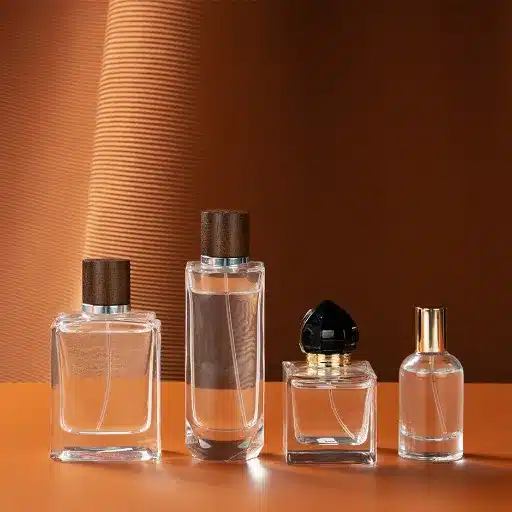
Witchcraft and perfumery intertwine, hung on the edge of beauty and practical life; this is where the best parameter of perfume bottle-making sits. While design has been generally conceptually grouped into art and function, case design and manufacture is a classic example of expertise across the arts and sciences. The most relevant design questions are discussed in terms of materials and construction, but materials should be beautiful and pleasing to the eye. With the right material—choose from glass, metal, or high-grade plastic—compromise must be kept to a minimum so as not to weaken the integrity of the bottle and to fully articulate all sides of the emitted essence. Perfumers consider the mechanism of sealing the substance in the bottle with high precision so that leakage would not spoil the scent during its life. This sealing system and the bottle’s design should strike a balance between practicality and beauty, prioritizing the consumer’s needs with a clear intent to provide a simple dispensing mechanism or an atomizing nozzle that anyone can operate. Environmental protection and related regulations are essential standards throughout all stages of creation to develop the most sustainable bottle manufacturing process, one that meets customers’ expectations and the standards set worldwide.
Materials Used in Crafting Perfume Bottles
| Material | Key Points |
|---|---|
| Glass | Most common, elegant, recyclable, and durable. |
| Plastic | Lightweight, affordable, and resistant to breakage. |
| Metal | Often used for caps or accents, corrosion-resistant. |
| Ceramic | Unique aesthetic, fragile, and less commonly used. |
| Wood | Eco-friendly, often used for decorative accents. |
| Crystal | Premium option, luxurious, and highly polished. |
| Resin | Flexible designs, durable, and weather-resistant. |
| Aluminum | Lightweight, protects perfume from light exposure. |
| Silicone | Provides grip, used as an additional protective layer. |
| Composite materials | Combines multiple materials for strength and cost-effectiveness. |
Production Challenges and Solutions
Material Sourcing
Materials such as glass, wood, or aluminum rarely offer a guarantee of sustainability at an affordable price. Today, some manufacturers have begun to use recycled materials—a marked step from preceding eras—while others obtain raw materials from certified suppliers to uphold a degree of environmental consciousness while maintaining the same level of quality.
Design Complexity
Typically, with crystal and resin materials, production cost increases and schedule delays often accompany the complex, intricate designs. Giving some relief to this anguish of wanting to maintain fine designs while reducing production complexity are new technological solutions, including 3D printing and precision molding.
Durability and Protection
Ensuring containers are strong enough for shipping and everyday handling, but still protect perfume from changes brought about by light and temperature, forms the major focus. Combining the use of durable yet lightweight materials, such as resin or aluminum, with UV-resistant coatings has become essential in ensuring product longevity.
Cost Management
Rising costs for raw materials and manufacturing processes can thus inflate the prices of its final product. By utilizing composite materials and optimizing production lines with automation, companies can reduce costs without compromising quality.
Sustainability Issues
One rising demand relates to eco-friendly packaging solutions. Switching to biodegradable and recyclable materials, such as FSC-certified wood or more innovative composites, would be a way to address environmental issues while meeting consumer demands for sustainability.
Advancements in Technology for Design and Production
There have been great advances in emerging technologies that allow industries to be more precise, efficient, and creative in designing and manufacturing products. One of the advancements involves greater detail on integration: 3D printing has been integrated into manufacturing to enable rapid prototyping and customization of complex designs with minimal waste. AI has enhanced its capabilities in modeling and advanced simulations, resulting in improvements in product functionality and aesthetics. Such CNC (Computer Numerical Control) operations, which work with high precision in production, help reduce errors and increase consistency across batches. Environmentally friendly approaches include the use of energy-efficient production machinery and material recycling systems. These advancements drive innovation while also considering consumer demands and environmental aspects.
Collaborative Efforts in Perfume Bottle Design
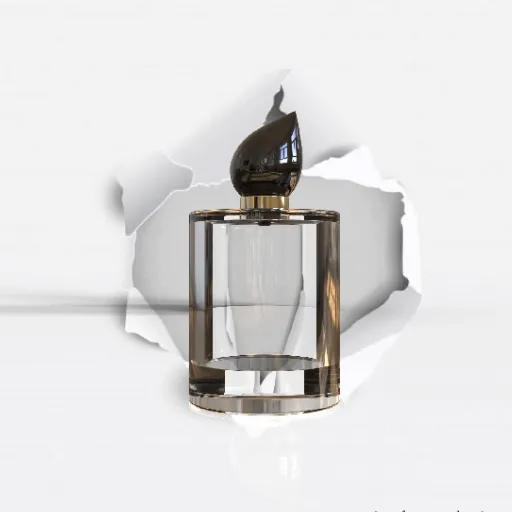
Bottle design for perfume is typically a collaborative effort among perfumers, designers, and marketers to create a product for commercial use that is both functional and aesthetically pleasing. Designers place their primary focus on visual concepts — shape, color, and materials used — so that the bottles align with the brand identity of the perfume. Marketers come in with their perspective on consumer trends and their preferences. They ensure the final product, together with the designers, captures not just the feelings of the fragrance but also those of the target audience through interdisciplinary efforts. This multidisciplinary approach is crucial for crafting bottles that can make a lasting impression in a highly competitive market.
Artisan Craftsmanship vs. Mass Production
| Parameter | Artisan Craftsmanship | Mass Production |
|---|---|---|
| Production Scale | Small-scale, limited quantities | Large-scale, high output |
| Personalization | Highly customizable | Minimal to no customization |
| Quality Control | Detailed and hands-on | Automated, batch-based |
| Materials Used | Premium and often sustainable | Cost-effective, varied quality |
| Production Time | Time-intensive | Faster production timelines |
| Environmental Impact | Often eco-friendly | Potentially higher carbon footprint |
| Skill Requirement | Skilled artisans required | Minimal manual skill required |
| Uniqueness | Unique and one-of-a-kind | Generic and standardized output |
| Cost to Consumer | Higher price point | Lower price point |
| Target Market | Niche or luxury consumers | Mass consumer market |
Partnerships Between Designers and Perfumers
The common effort of designers and perfumers is key to making innovation possible for the fragrance industry. Designers utilize their expertise to create visually appealing and functional bottle designs that not only protect the fragrance but also capture the attention of the target consumer. On the other side, perfumers give life to their scents, crafting them to induce feelings, memories, and identity into someone. Upon such common ground, these two branches of collaboration explore new trends in eco-friendly materials and sustainable packaging, which now play a significant role in decision-making. By dovetailing the creative vision of designers and the technical knowledge of perfumers, they push the envelope in more conventional fragrance offerings, which are both senses-focused and ethically appealing to the modern consumer.
Reference Sources
-
Potential Dimensions of Consumers’ Affective Responses to Perfume Bottle Form
- Key Findings: This study identifies five potential dimensions of consumer responses to perfume bottle designs: aesthetic evaluation, novelty and peculiarity, fashion and trend, personality suitability, and emotional association.
-
Construction of Perfume Bottle Visual Design Model Based on Multiple Affective Responses
- Key Findings: The study developed a design support model using the Fuzzy Analytic Hierarchy Process (FAHP) to assist designers in creating visually appealing perfume bottles. It emphasizes the importance of aligning bottle designs with consumer affective responses to enhance market appeal.
Frequently Asked Questions (FAQs)
Q: What are the key elements of a luxurious perfume bottle design?
A: A luxurious perfume bottle design commonly employs distorted high-quality glass materials in its craftsmanship. If a glittering or shining effect is added to the glass perfume, it unfurls the pleasant name of a perfume. A beautiful gloss or a subtle, fuzzy matte touch can suddenly enhance the appeal of the actual bottle. A good-looking cap supports all functional elements, eg, conferring a lavish closure on the bottle itself. Many companies are taking a step forward by engaging renowned designers to create exclusive, museum-worthy collections that speak louder in the market. These days, it’s about balancing art and functionality that makes a brand’s perfume bottle design chic.
Q: How can I customize a perfume bottle for a special gift?
A: A custom perfume bottle could turn a great gift into a truly special one. The starting point could be selecting a custom perfume bottle shape that conveys the recipient’s personality. Many brands offer engraving facilities, allowing you to add a personal message or logo to the bottle. Of course, one can choose a fragrance that may lean toward, say, a floral scent believed to be in harmony with the recipient. On top of all that, the packaging design is also something to consider, as an exquisitely designed box would enhance any gift. Limited-edition collections are another option for finding those special avenues of customization, ensuring this flower-giving gesture is unforgettable.
Q: What materials are commonly used in high-end perfume bottle design?
A: An excellent finish for a high-end perfume bottle is generally luxurious in every aspect-it uses fine materials, the most common being glass, because it can display beauty inside with utmost grace. Some designers may go for metals and ceramics as contrasting elements of refinement and creativity. Elaborate caps, crafted from high-quality materials, may also enhance the bottle design. Luxury editions would include engraved patterns or customized labels to convey a special meaning to their appearance; thus, the artistic craftsmanship involved in making these bottles speaks volumes about the brand’s commitment to excellence and art. Collaborations with renowned craftsmen and designers can elevate the design even further, making the bottle a true work of art.
Q: How does packaging design influence consumer perception of perfume?
A: Packaging design in a big way shapes the impact on consumer perception of perfume brands. The advertisement would induce emotions and implicitly convey the idea of the fragrance, making its appeal to buyers. In other words, a sleek glass perfume bottle with a classy cap can convey sophistication and fine quality. On the other hand, an unimpressive packaging would lay the grounds for a poor quality assumption. Additionally, limited-edition releases often come with out-of-the-box packaging that guarantees they sell themselves and remain exclusive. Visual branding and color, texture, and labeling would all hugely influence an average decision.

